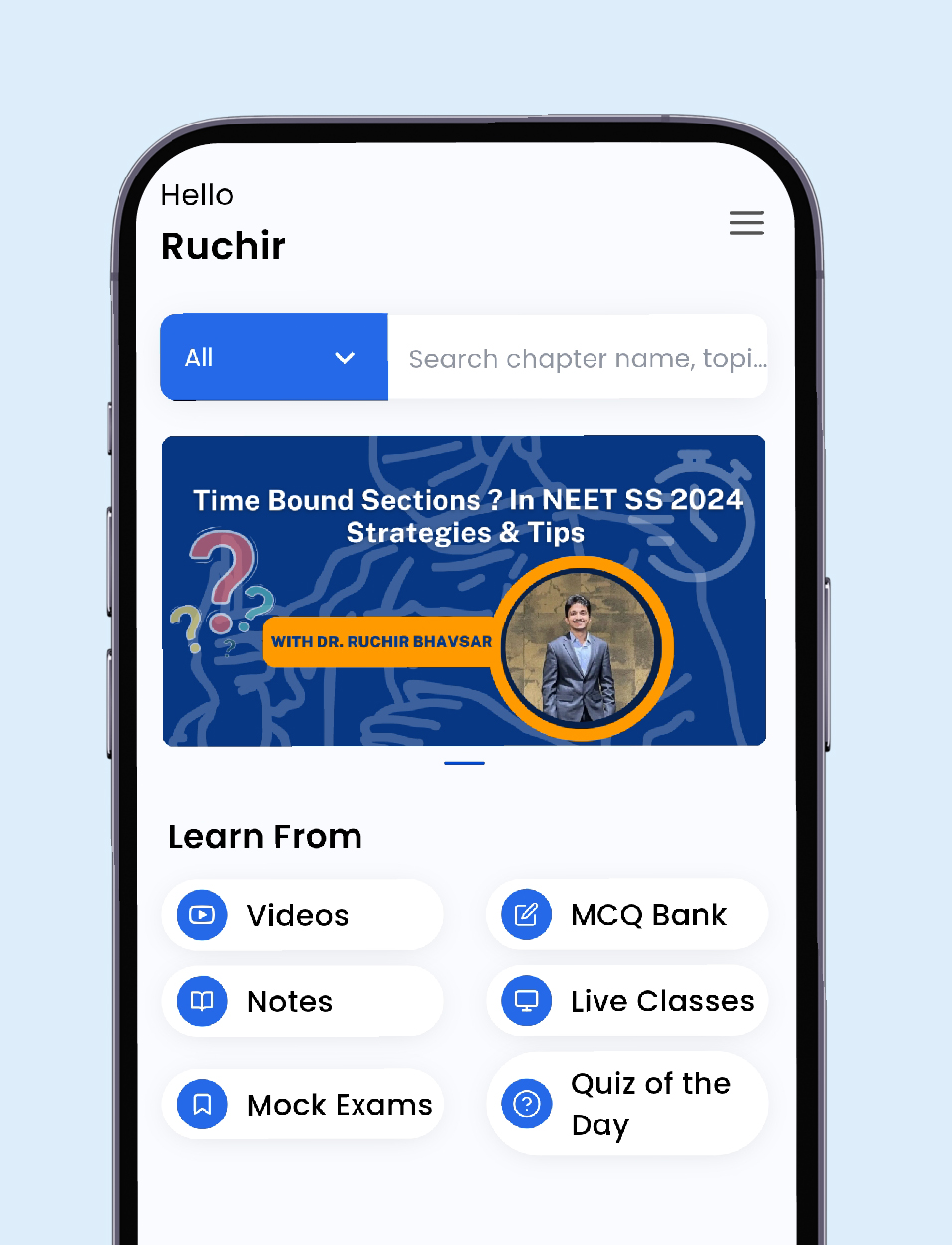By: Dr. Ruchir Bhavsar
Preparing for the NEET SS can be daunting, with the pressure to master an extensive syllabus and excel in MCQs. Success hinges not only on what you know but also on how well you analyze your mistakes. Understanding why you made an error is just as important as learning the correct answer. Let’s dive into the four key reasons behind mistakes in MCQ solving and how to address them effectively.
1. You Don’t Know the Answer
This is a straightforward issue and indicates a gap in your knowledge. These mistakes often arise when:
- The topic is unfamiliar.
- You haven’t revised the concept enough.
- The question is from a less-prioritized topic.
How to Fix It:
- Identify Knowledge Gaps: Make a list of topics or subtopics where you tend to falter. Use this as a guide for focused revision.
- Strengthen Your Basics: Go back to standard textbooks like Bailey & Love, Sabiston, or Schwartz. Read critically and create or use concise notes.
- Use Active Recall: Practice regularly with flashcards or spaced repetition tools to ensure long-term retention of concepts.
2. You Are Confused
Confusion often stems from partial understanding or overlapping concepts. You might recognize the topic but struggle to distinguish between similar-looking options. This type of mistake is common in multi-step clinical reasoning questions.
How to Fix It:
- Revisit Core Concepts: Re-read the relevant section in textbooks to clarify subtle differences. For example, revisit vascular anastomosis techniques if the confusion lies in surgical approaches.
- Practice Similar Questions: Work on more MCQs from the same topic to build confidence and clarity.
- Use Concept Maps: Visualize related concepts to understand how they are interlinked. This method can clarify overlaps and distinctions.
3. You Know the Answer but Are Hasty
These mistakes occur when you rush through questions without fully reading them. You might:
- Misinterpret the question stem.
- Overlook keywords like “except” or “most likely.”
- Jump to a conclusion without analyzing all options.
How to Fix It:
- Slow Down: Develop a habit of reading the question twice. Highlight keywords that change the meaning, such as “not” or “least likely.”
- Practice Under Timed Conditions: Simulate exam scenarios to balance speed with accuracy. Set a timer and aim to spend around 45 seconds per question.
- Review Hasty Errors: After each mock test, identify questions where you rushed. Reflect on why you missed the key details.
4. You Change Your Answer at the End Due to Lack of Clarity
This type of mistake happens when self-doubt creeps in. You might:
- Second-guess your initial instinct.
- Change an answer from correct to incorrect.
- Lack clarity in your reasoning during the final review.
How to Fix It:
- Trust Your Gut: Studies show that your first instinct is often correct. Avoid overthinking unless you’re sure of the change.
- Improve Conceptual Clarity: If you find yourself second-guessing frequently, it may point to underlying gaps in your understanding. Strengthen these areas through targeted study.
- Practice Decision-Making: Work on questions with similar difficulty levels to build confidence in your reasoning process.
How to Systematically Analyze Mistakes
- Keep an Error Log: Maintain a record of all the questions you got wrong and classify the mistakes into the above categories.
- Review Regularly: Go through your error log weekly to ensure you’re addressing recurring patterns.
- Learn from Each Mistake: Instead of feeling discouraged, treat each mistake as a learning opportunity.
Final Thoughts
Mistakes are an inevitable part of the learning process, but analyzing them with precision can turn them into powerful stepping stones for success. By categorizing your errors into lack of knowledge, confusion, haste, or lack of clarity, you can tackle the root causes systematically.
Remember, excellence in NEET SS is not just about knowing everything—it’s about mastering your approach. Keep practicing, stay consistent, and trust in your preparation!





